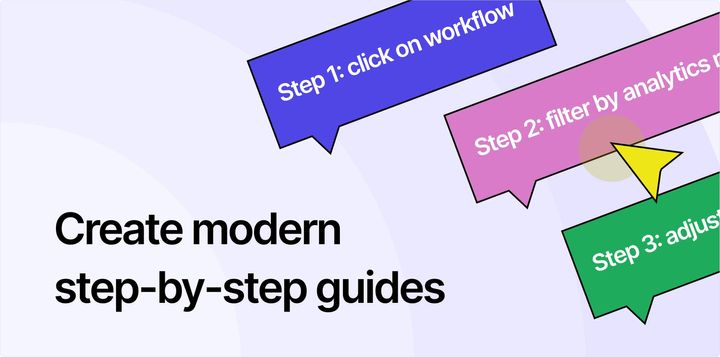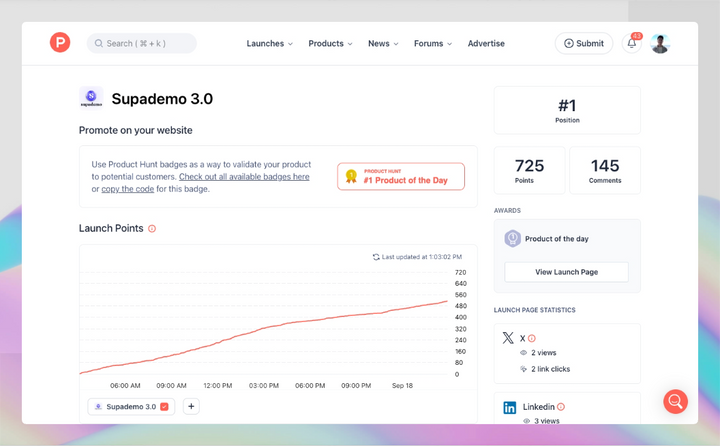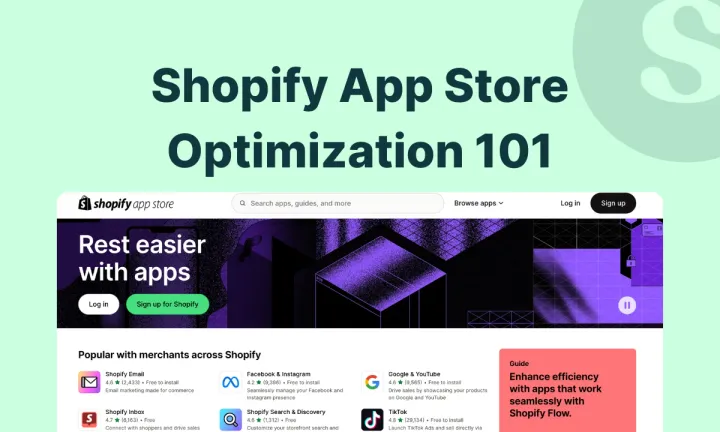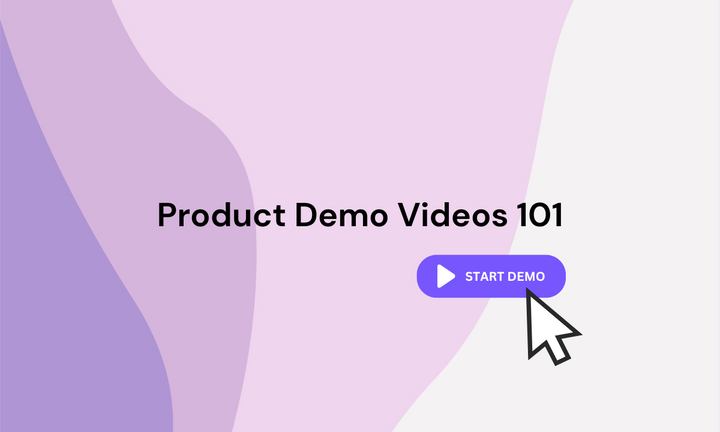Ever wonder why some SaaS companies seem to grow effortlessly while others struggle? Often, it comes down to one underrated superpower: great documentation ✨
"I've written documents for Jeff, and in my opinion the six-page narrative memo is a key part of Amazon's success... Amazon's leadership makes better decisions than their competitors in part because they are routinely supplied with better arguments than their competitors."
- Source
A step by step guide is a game-changer across the board. For your users, they're the difference between frustration and "aha!" moments. For your team, they're the key to consistency and efficiency. And for your bottom line? They're rocket fuel.

Think about it:
- Marketing team rolling out a new campaign? There's a guide for that.
- Support team handling tricky issues? Yep, guide.
- New hires trying to find their feet? You guessed it – guide.
In this blog, we'll show you how to create powerful, modern, interactive step-by-step guides that turn complexity into clarity, empower your users, and unlock your SaaS company's full potential.
Let's dive in.
What is a Step-by-Step Guide
A step-by-step guide is a clear, organized set of instructions that breaks down a complex process into manageable tasks. It's like a roadmap that leads users from start to finish, ensuring they don't miss any crucial steps along the way.
✅ Internal use: They standardize processes within your team, ensuring consistency in product development, customer service, and operations.
✅ External use: These guides help users navigate your software, maximizing its value and reducing support tickets.
A well-crafted step-by-step guide might include:
- Numbered steps
- Clear, concise instructions
- Visual aids (images, diagrams, or gifs/videos)
- Tips and warnings
- Examples or use cases
For instance, a step-by-step guide for deleting a HubSpot account might look like:
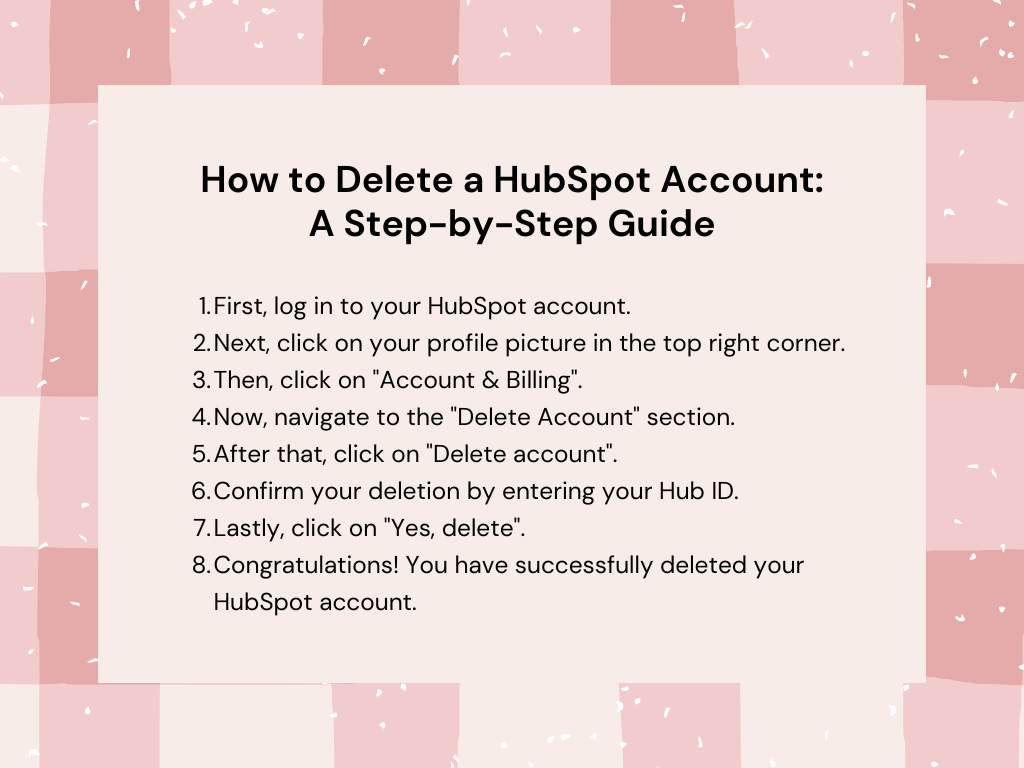
Creating how-to guides simplifies complex tasks, making them accessible to anyone who follows the instructions. They're valuable tools for learning, teaching, and ensuring consistency.
Types of Step-by-Step Guides and Examples
1. User Manuals
A comprehensive guide detailing how to use a product or service. It covers setup, features, and basic troubleshooting. User manuals are crucial for reducing support queries and ensuring users can maximize product value independently. These are essentially in-depth how-to guides.
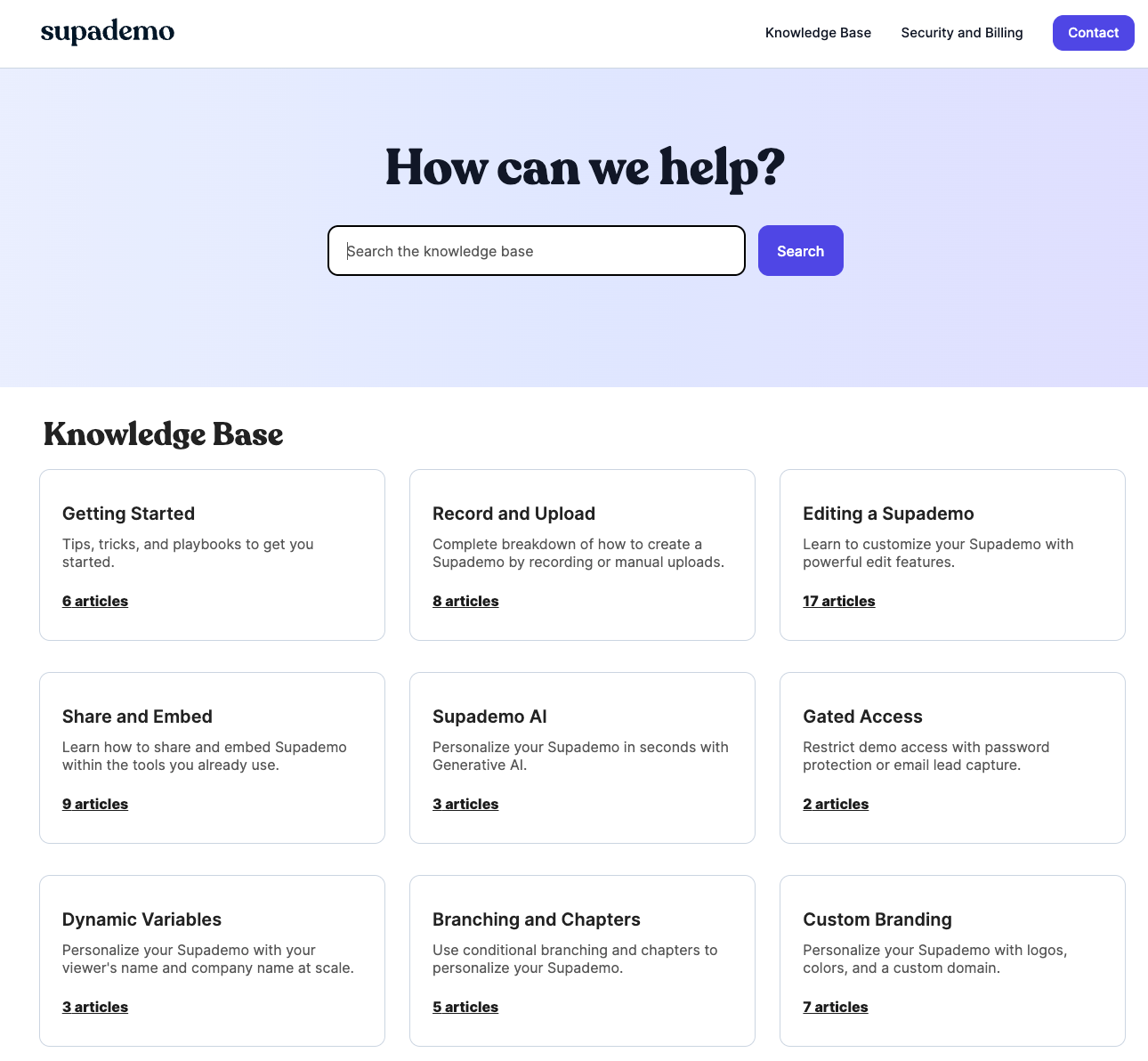

2. SOPs (Standard Operating Procedures)
Detailed instructions for carrying out routine organizational tasks. SOPs ensure consistency, maintain quality, and improve efficiency across teams. They're vital for scaling operations and preserving institutional knowledge.
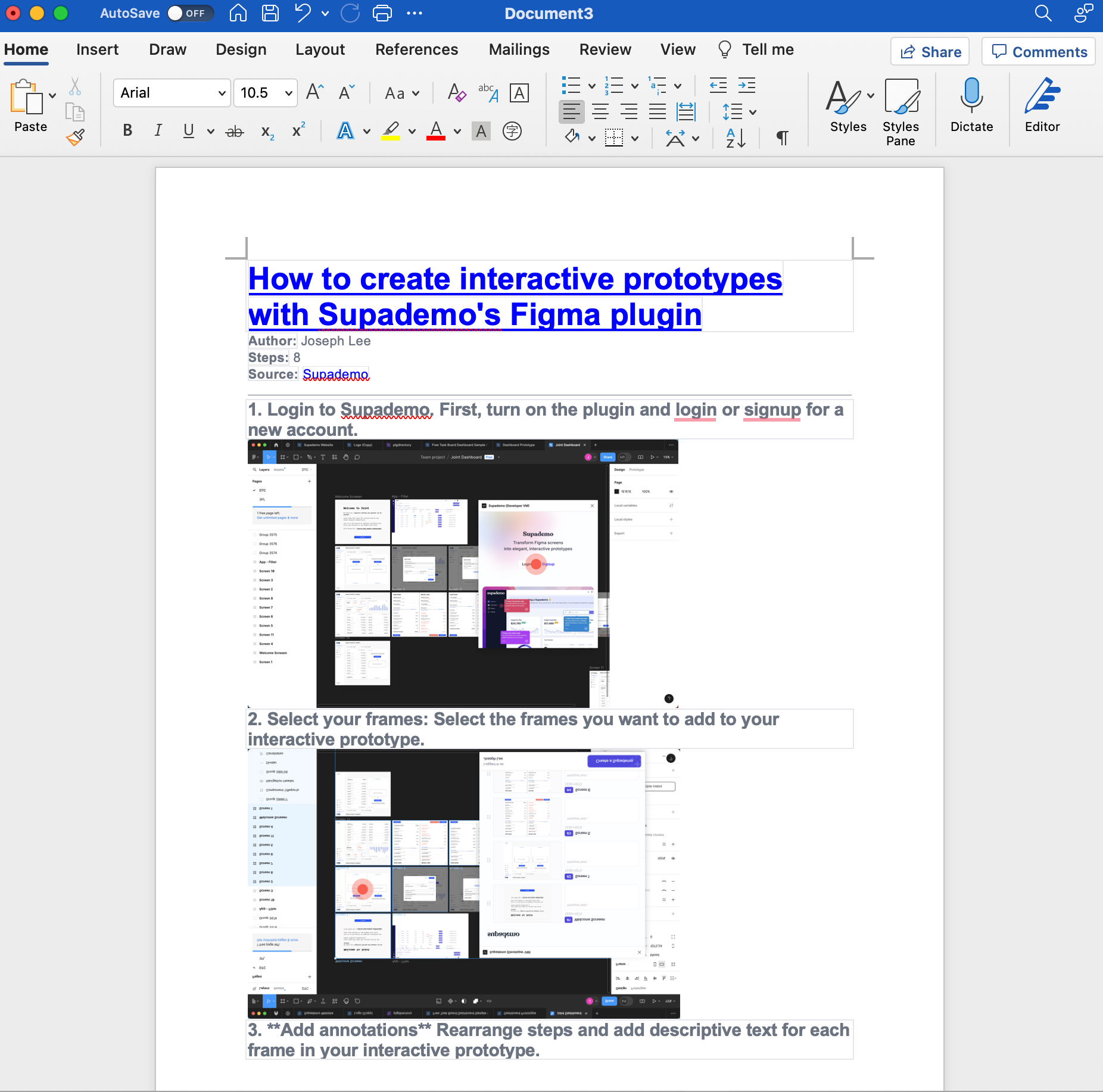
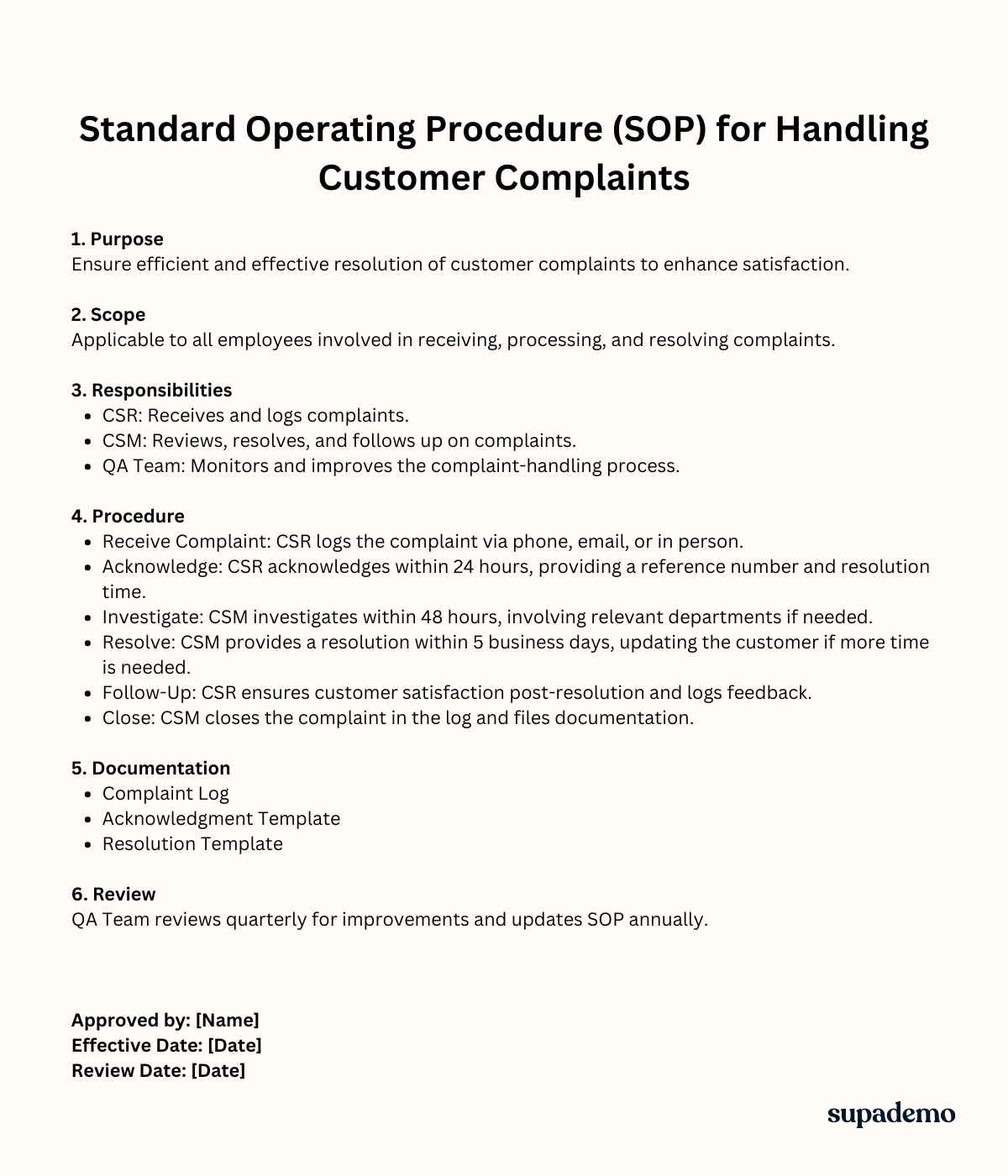
3. Employee Onboarding Guide
This is a step by step guide that is a roadmap for integrating new hires into an organization. It covers initial setup, training, and introductions to company culture. Effective onboarding guides reduce time-to-productivity and improve employee retention.
4. Customer Onboarding Guide
Instructions to help new customers start using a product or service effectively. It focuses on key features and initial setup. Customer onboarding guides are critical for reducing churn and increasing early adoption rates.
Here's an example of the interactive step-by-step guide used by Supademo for customer onboarding:
5. Customer Service Guide
A reference for handling customer interactions and resolving common issues. It typically includes communication templates, step by step instructions, and escalation procedures. These guides ensure consistent, high-quality customer service across all touchpoints.

6. Product Training Guide
Detailed instructions on using specific product features or modules. It often includes hands-on exercises and assessments. Product training guides accelerate feature adoption and help users derive more value from the product.
7. Transition Plan
A guide outlining steps for moving from one system, process, or role to another. It includes timelines, responsibilities, and risk mitigation strategies. Transition plans are crucial for managing change with minimal disruption.

8. Troubleshooting Guides
Systematic instructions for identifying and resolving common problems. They typically use a decision-tree format to guide users through diagnostic steps. Troubleshooting guides reduce support load and empower users to solve issues independently.
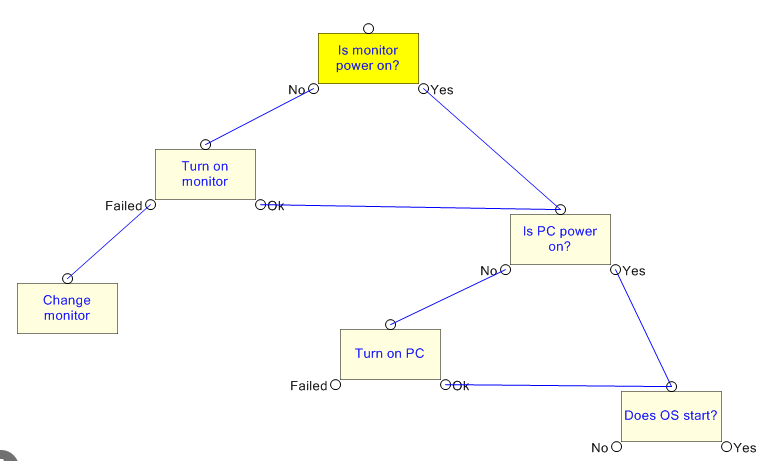
Why Should SaaS Teams Create Step-by-Step Guides?
Here's the deal: Most companies are terrible at explaining how their processes work.
The result?
Fortune 500 companies in total lose an average of $12 billion per year due to inefficiency caused by unstructured document management.

Step by step guides aren't just random documents. They're growth tools. They cut down on confusion, speed up work, and keep everyone on the same page. For SaaS companies, a step-by-step guide is not just a helpful resource—they're strategic assets that drive user success, operational efficiency, and business growth.
Here's why creating these guides should be a priority:
Improve cross-team alignment
According to G2, sales and marketing alignment can help companies become 67% better at closing deals.
Step-by-step guides serve as a common reference point for sales, marketing, customer success teams, and other teams.
• Consistent messaging across all customer interactions
• Better handoffs between teams as customers move through the funnel
• Shared understanding of product features and benefits
• Reduces miscommunication and improves overall service quality
Accelerate user onboarding and adoption
According to Wyzowl, 80% of people deleted an app because they couldn’t understand how to use it.
Well-crafted guides significantly reduce time-to-value for new users. By providing clear, sequential instructions, you enable customers to quickly grasp your software's core functions and start seeing results.
• Higher initial engagement
• Faster realization of product value
• Increased likelihood of long-term retention
Dramatically reduce support burden
A Zendesk study showed that up to 92% of customers would stop buying from a company after three or fewer poor customer service experiences.
Comprehensive step-by-step guides act as a first line of defence for user queries.
• Decrease support ticket volume
• Free up support staff for complex, high-value interactions
• Improve overall customer satisfaction through quicker problem-resolution
Drive significant time and cost savings
• Users spend less time searching for help, increasing productivity
• Support teams can handle more inquiries, improving efficiency
• Reduced need for repetitive 1:1 training sessions saves thousands in staff hours
By investing in high-quality step-by-step guides, SaaS teams don't just create documentation—they build a powerful tool for user empowerment, operational excellence, and sustainable growth.
How to Create Step-by-Step Instructions for Your Product
Creating an effective step-by-step guide for your SaaS product requires careful planning and execution. Let's break down the crucial steps to creating clear and concise instructions.
Here's the ideal documentation process SaaS companies should follow:
Step 1: Identify the problem(s)
Before diving into guide creation, pinpoint the specific issues your guide will address. This step is about understanding user needs and internal processes:
- Consult with your team: Engage with various departments to uncover common challenges. For example, your sales team might struggle with demonstrating a particular feature to prospects.
- Analyze user data: Review product usage metrics, support tickets, and customer feedback. Look for patterns that indicate where users frequently encounter difficulties.
- Create topic clusters: Start with broad categories (e.g., "User Management") and then break them down into specific guides (e.g., "Setting Up Role-Based Access Control").
- Prioritize guide topics: Focus on areas that will have the most significant impact on user success and support ticket reduction.
Step 2: Define the audience
Knowing your audience is crucial for creating a guide that resonates and delivers value. Consider:
- User roles: Are you writing for administrators, end-users, or both? Each may require different levels of detail and technical language.
- Experience level: New users might need more context and basic explanations, while advanced users may prefer concise, to-the-point instructions.
- Use case: Consider how different industries or job functions might use your SaaS product. Tailor examples and terminology accordingly.
- Internal vs. external: Guides for your team might include company-specific processes while customer-facing guides should focus on product features and benefits.
Step 3: Pick the software
Choosing the right software streamlines the guide creation process and enhances the final product:
- Automation tools: Use process documentation software like Supademo to automatically generate visual guides. These tools capture your actions as you perform tasks, saving time and reducing errors.
• Create step-by-step guides in < 5 mins
• Captures screenshots/videos automatically
• Reduces time spent on manual documentation
• Maintains consistency across guides
- Consider integration: Select tools that integrate with your existing systems for seamless workflow and distribution.
- Customization options: Look for software that allows you to edit and customize the generated guides to match your brand and add specific details like if you want to incorporate visual aids.
Step 4: Outline the steps
For processes that can't be automatically captured or if you prefer a manual approach, start by outlining the key steps:
- Brain dump: List all steps involved in the process, regardless of order.
- Identify milestones: Mark critical points in the process that signify major progress or transitions.
- Group related actions: Combine smaller steps under larger, overarching tasks.
- Consider variations: Note any alternative paths or decision points in the process.
- Think chronologically: Arrange steps in a logical, time-based sequence.
- Validate the outline: Review the steps with team members who regularly perform the task to ensure nothing is missed.
Step 5: Create or write up the guide
With your outline in place, it's time to flesh out your step-by-step guide:
- Order steps logically: Arrange steps in a sequence that makes sense for the user.
- Add clear subheadings: Break the guide into easily digestible sections.
- Incorporate visuals: Include screenshots, GIFs, or videos to illustrate key actions.
- Keep it concise: Use clear, direct language. Avoid unnecessary jargon.
- Add tips and troubleshooting: Include helpful notes and common issue resolutions.
- Customize automated guides: If using software like Supademo, refine the auto-generated content.
Remember, visuals are crucial. To make your visuals more impactful, use tools to sharpen images so they appear clear and professional. Aim for a balance of text and images to enhance understanding.
Step 6: Share with your team
Effective distribution ensures your guides are used. Implement these practices:
- Announce via internal channels: Use email, Slack, or other communication platforms.
- Link from collaboration tools: Make guides easily accessible from frequently used platforms like Notion.
- Highlight in knowledge base: Feature new and updated guides prominently.
- Use update bots: Automate notifications of guide changes through communication channels.
- Enable collaboration: Allow team members to suggest improvements or updates.
- Train on guide usage: Ensure everyone knows how to access and use the guides.
Step 7: Update regularly
Maintaining your guides is an ongoing process:
- Schedule regular reviews: Set monthly or quarterly check-ins to review and update guides.
- Assign ownership: Designate team members responsible for specific guides or sections.
- Encourage feedback: Create a system for users to report outdated information or suggest improvements.
- Track software updates: Stay informed about changes in your SaaS product that may affect guide accuracy.
- Version control: Maintain a history of changes for each guide.
- Communicate updates: Notify users when significant changes are made to guides.
By following these steps, you'll create, distribute, and maintain effective step-by-step guides that truly support your SaaS users and team members.
Different formats of step-by-step instructions
When it comes to creating guides, one size doesn't fit all. Here's a rundown of the main formats of step by step guides:
1. Text-based guides
These are simple, written instructions.
- Best for: Quick reference guides or simple processes.
- Pro: Easy to create and update.
- Con: Can be boring and hard to follow for complex tasks.
2. Image-based guides
This type of process documentation is a step up from text-based guides. These combine text instructions with screenshots or diagrams.
- Best for: Illustrating UI-specific tasks or processes with visual elements.
- Pro: Clearer than text alone, especially for visual learners.
- Con: Can become outdated quickly when UI changes. May be slow to load on poor connections.
3. Video tutorials
These are recorded step by step tutorials, often with voiceover explanations. Video step by step instructions are great for visual learners - they show the exact process.
- Best for: Demonstrating complex, visual processes or giving a product overview.
- Pro: Shows exact steps in real-time. Great for visual and auditory learners.
- Con: Hard to skim or follow at your own pace. Can be time-consuming to update.
4. PDF manuals
Create how to guides in PDF format for comprehensive documentation covering all aspects of a product.
- Best for: In-depth, technical information or when regulatory compliance requires formal documentation.
- Pro: Thorough, printable, and good for offline use.
- Con: Often overwhelming and hard to navigate. Can become outdated quickly.
5. Interactive demos (like Supademo)

Here's where things get exciting. Interactive demos are the new gold standard in step by step tutorials and process documentation. These are guided, interactive walkthroughs within the actual product interface that contain all the details required.
- Best for: Onboarding new users, promoting feature adoption, and walking through complex workflows.
- Pro: Engaging, self-paced, and easy to update. Provides real-world practice.
- Con: May require platform familiarity.
6. Chatbot-guided tutorials
AI-powered chat interfaces that guide users step by step.
- Best for: Simple troubleshooting, guided decision-making, or answering common questions.
- Pro: Available 24/7, can handle basic queries, and feels personalized.
- Con: Limited to pre-programmed responses and can't show visual processes well.
How to Create Modern, Interactive Step-by-Step Guides with Supademo in < 5 mins
Supademo is a no-code interactive demo software tool that helps SaaS startups create step-by-step demos for their products in minutes.
These are step-by-step interactive guides/walthroughs that can be embedded anywhere on the internet, exported as GIF/video, and converted to text-based how to guide in one click.
Step 1: Create your Supademo
1. Navigate to the page you want to record. Next, open the extension and tap "Start New Recording"
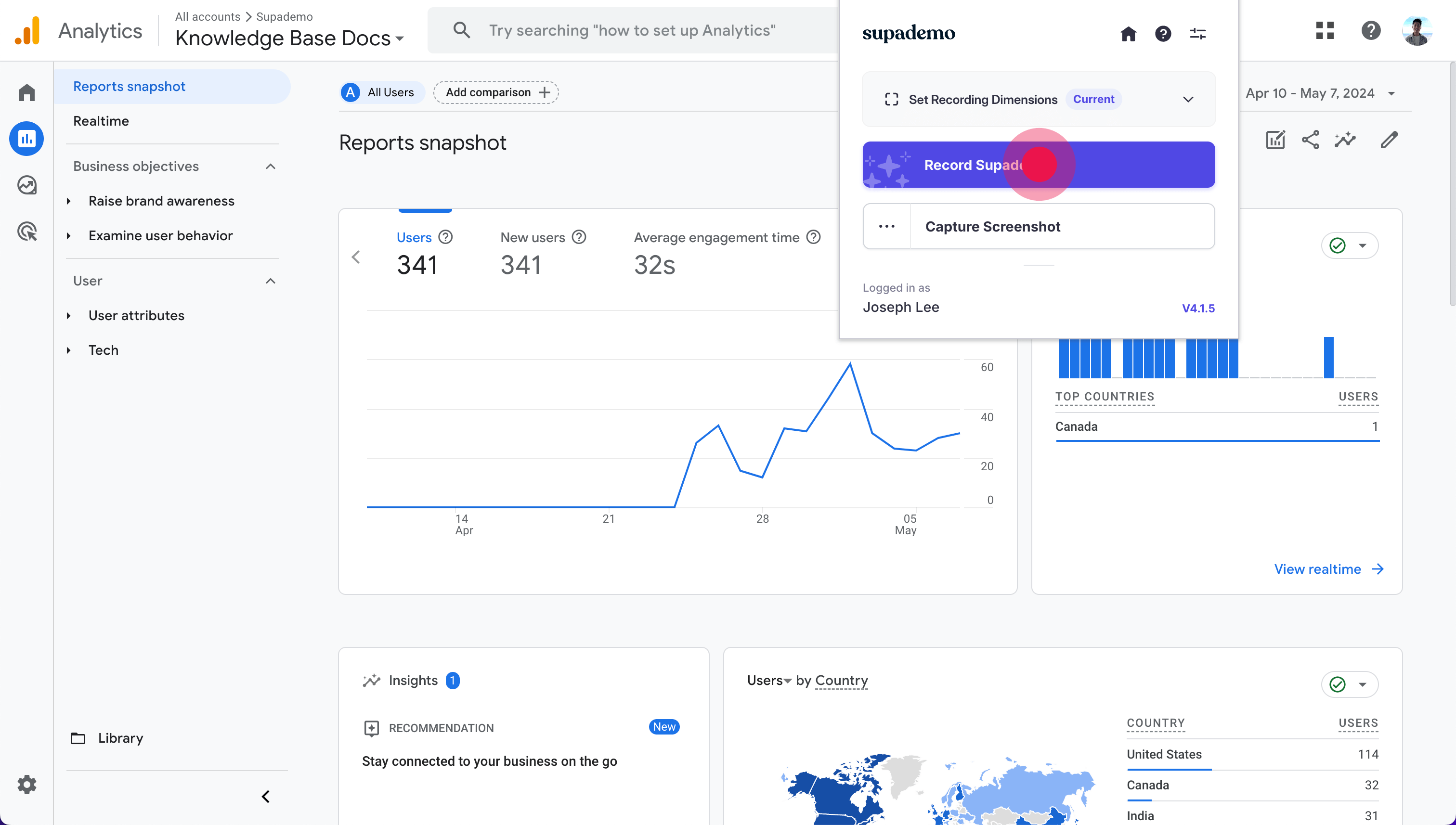
2. Next, click through any product. Supademo captures clicks and actions and automatically adds text descriptions for each step.
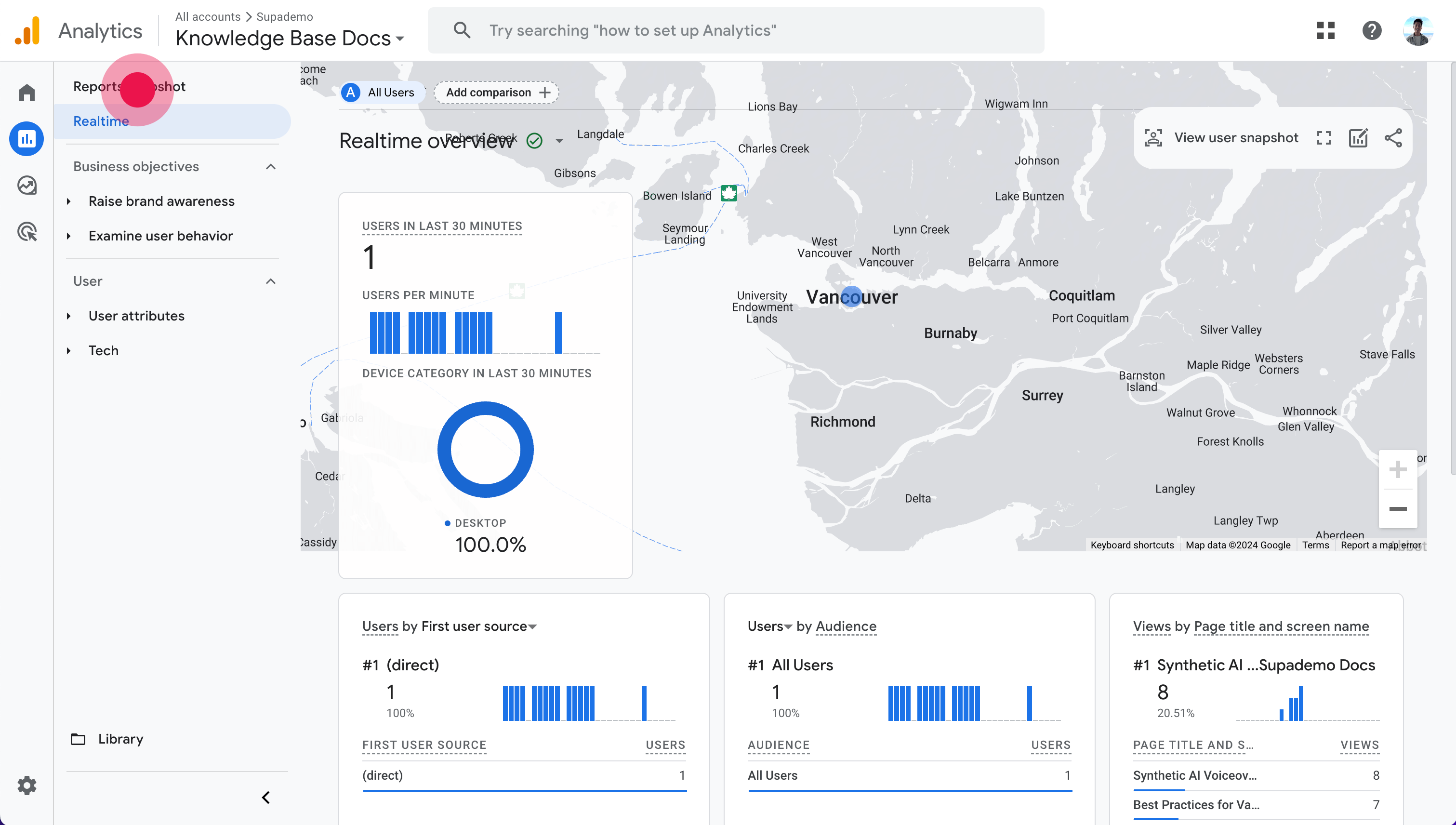
3. When you're ready, click "Stop Recording" and your Supademo will open in a new tab!

4. And your Supademo opens in a new tab, ready to be personalized or shared!
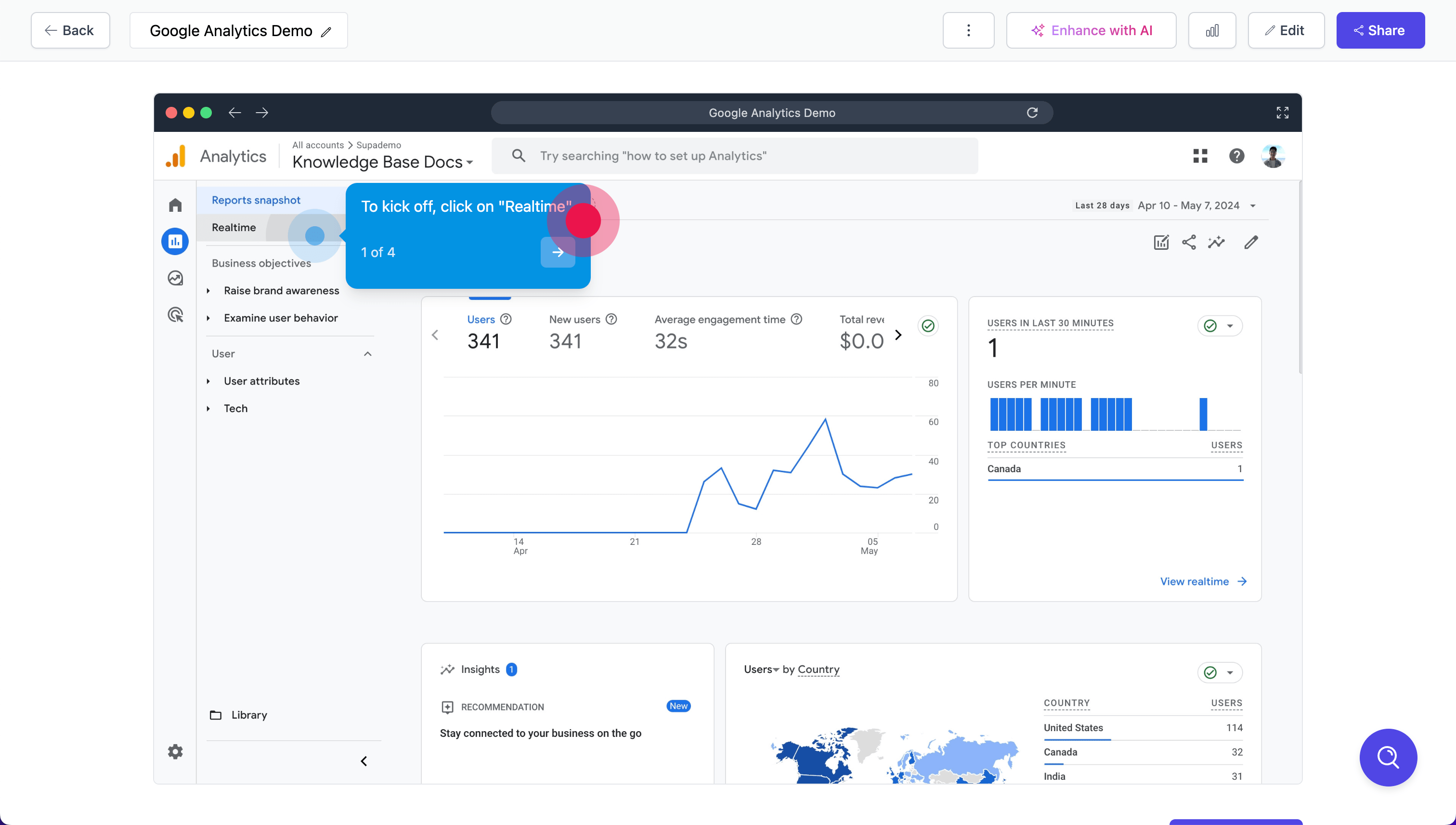
This workflow was created with Supademo.
Step 2: Share your interactive step-by-step guide in your desired format
1. Start off by clicking on "Share" on a Supademo you'd like to copy the text and images for.
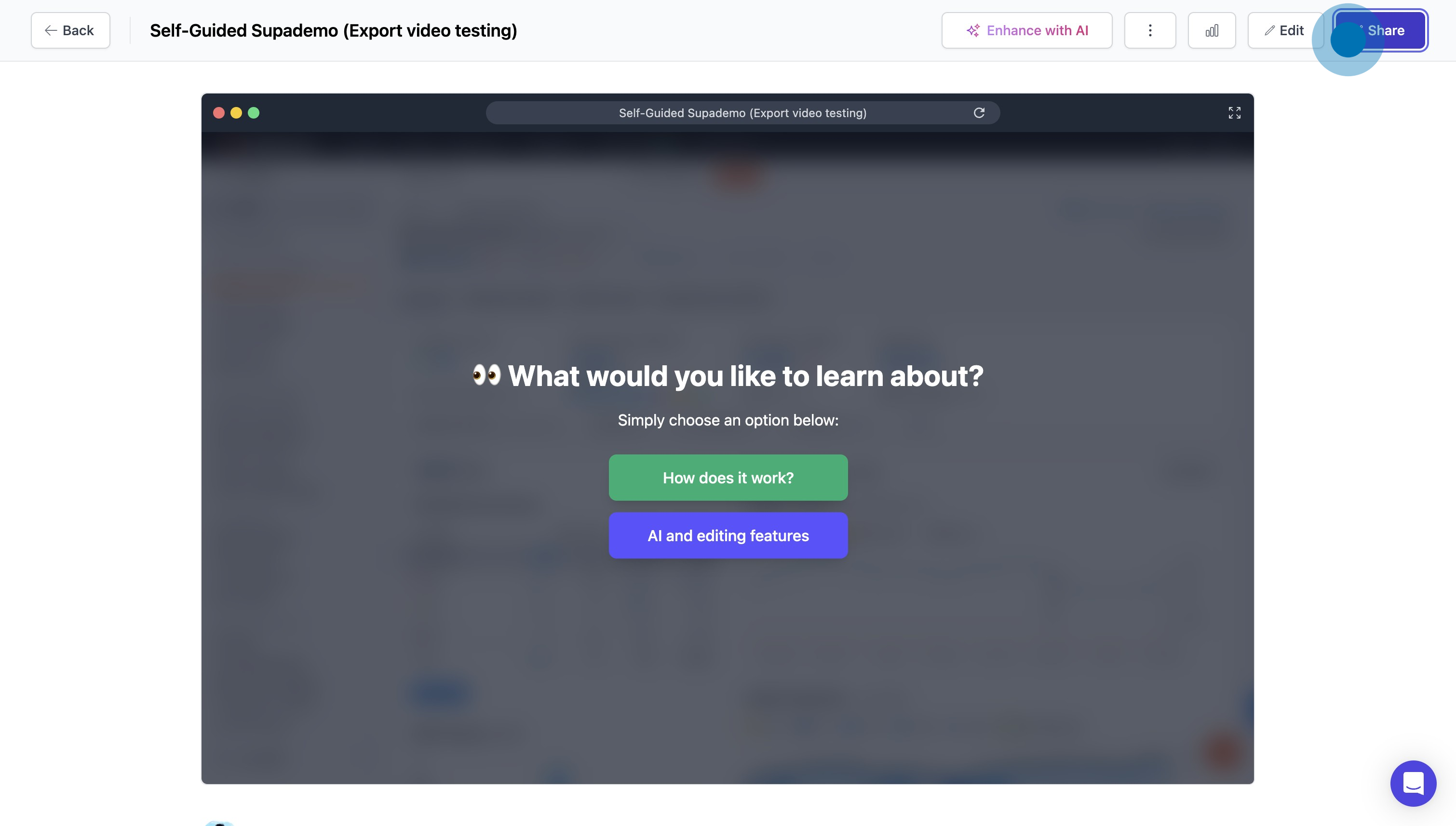
2. Next, click on "Copy Steps".
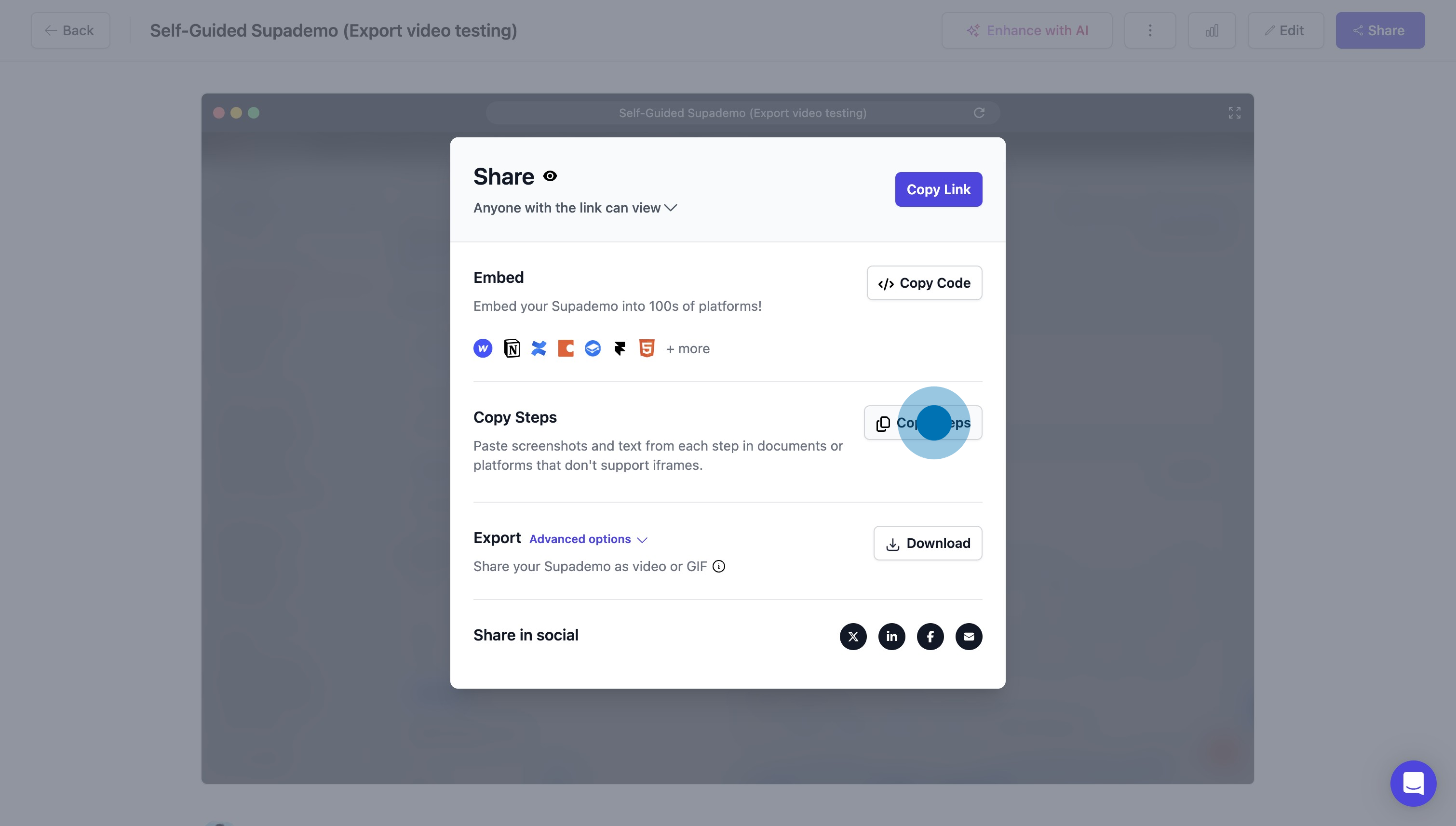
Note that you can share your Supademo in multiple ways - embed anywhere on the web, export as video/gif, or convert them as text+screenshot step-by-step guide.
3. Choose HTML for styled elements, or Text to simply grab unformatted text and images.
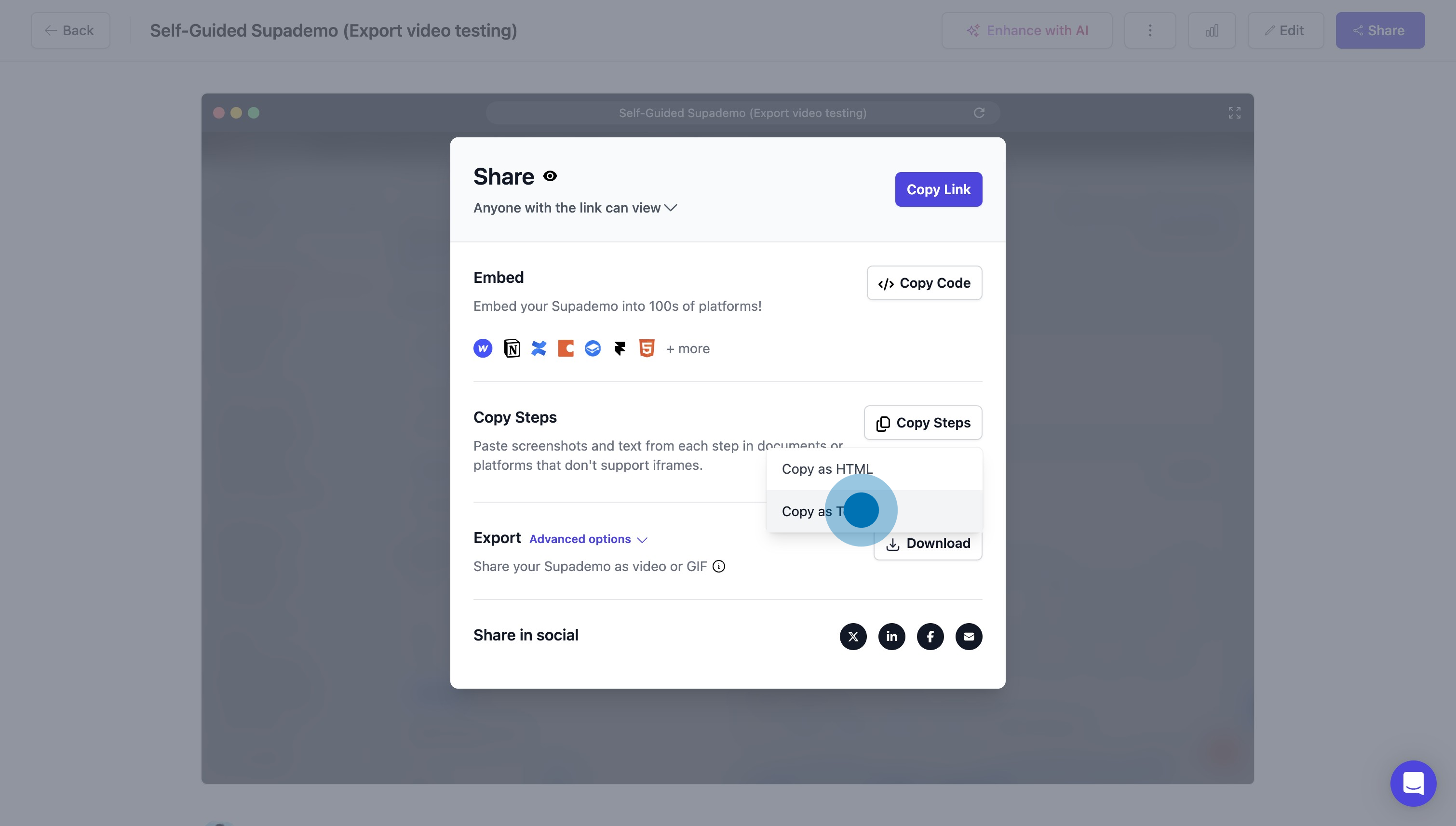
4. Next, navigate to the website, support page, or document you want to paste steps into.
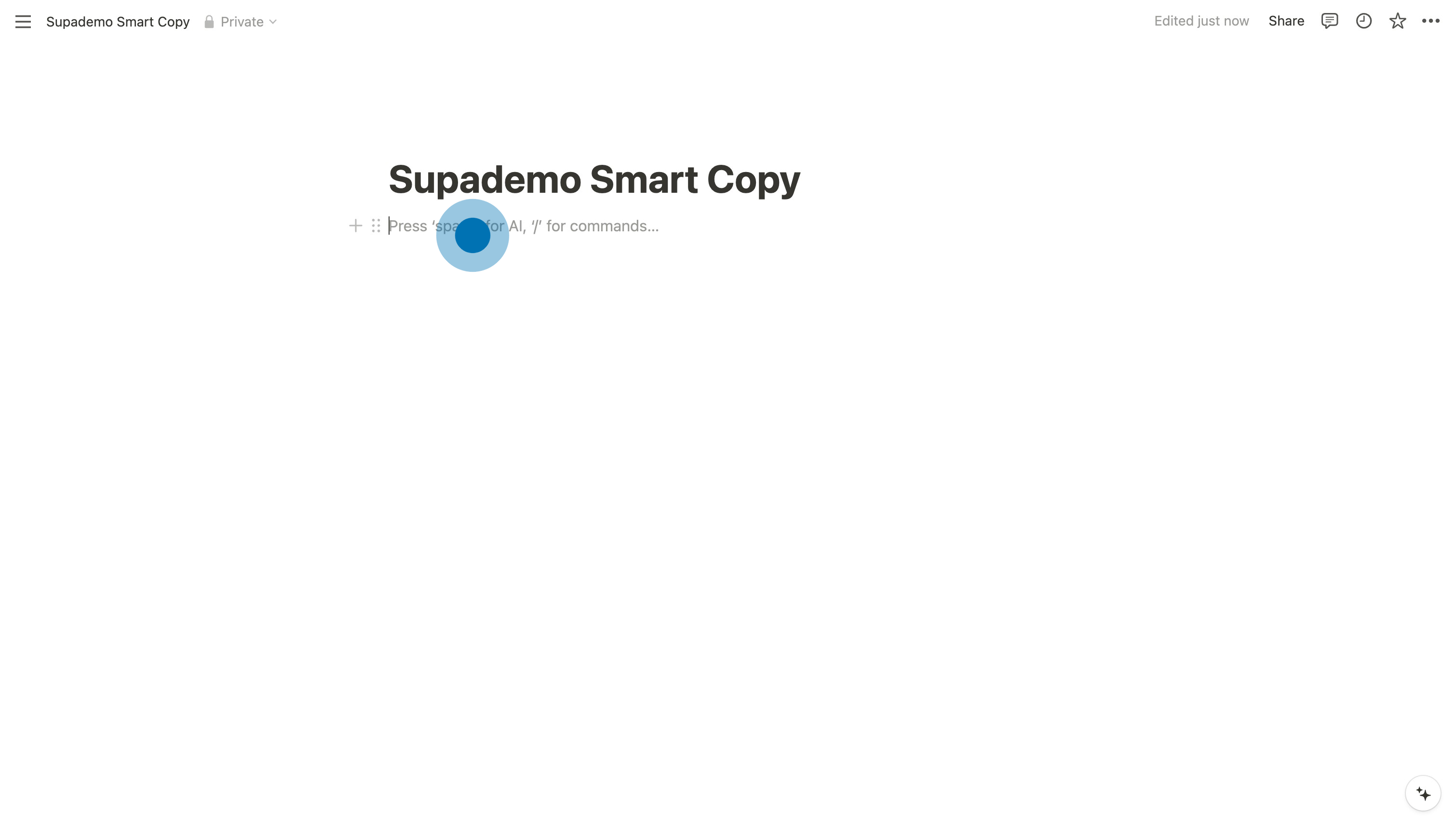
5. Then simply paste (command + v) to add it to your doc!
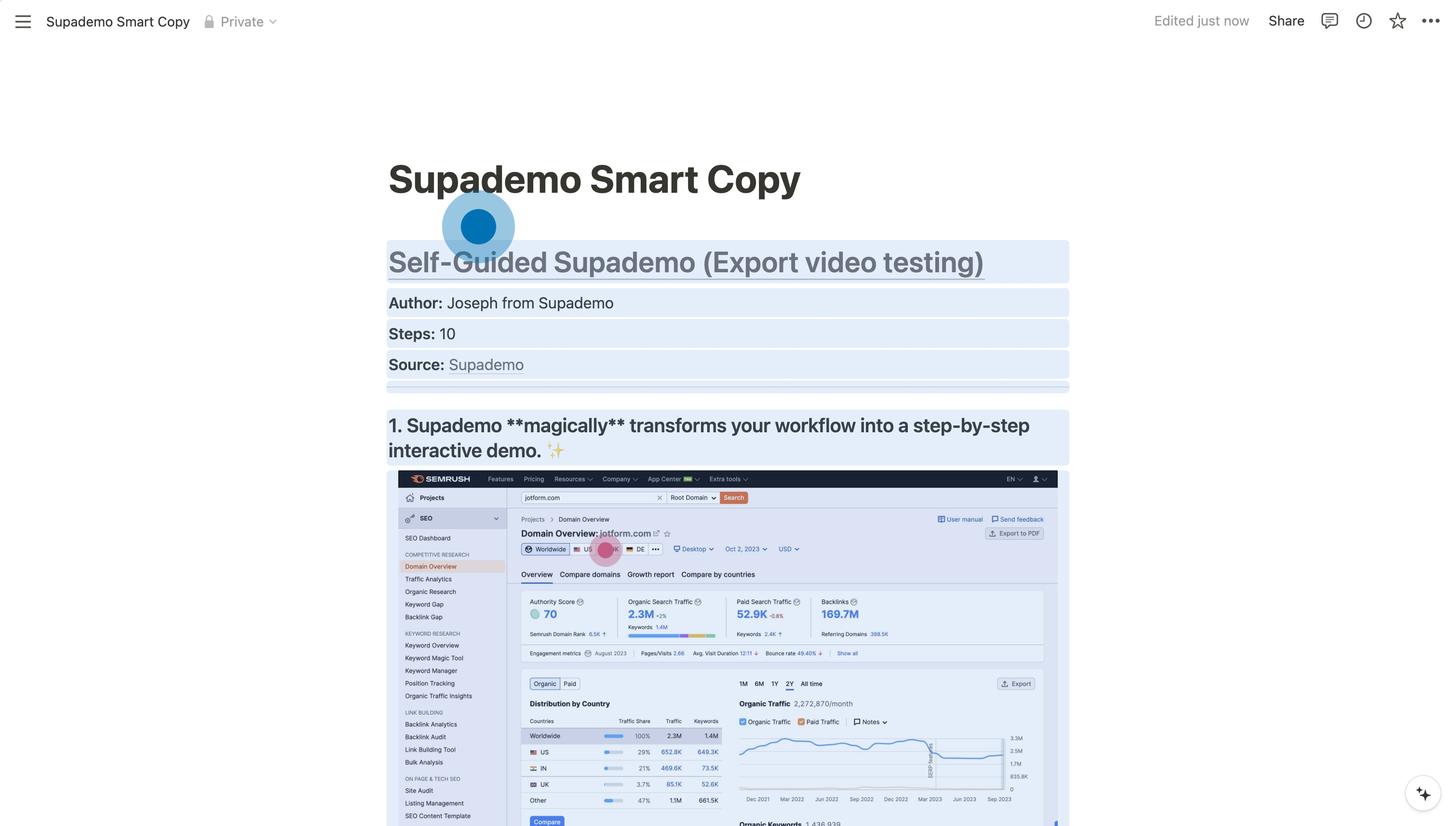
This workflow was created with Supademo.
Why Interactive Demos Outshine Traditional Step-by-Step Guides

Interactive demos, such as those created with Supademo, offer significant advantages over traditional step-by-step guides:
- Enhanced user engagement: Interactive demos provide a hands-on experience, allowing users to learn by doing rather than just reading.
- Real-time context: Users interact with a live version of your software, providing immediate context and reducing confusion.
- Reduced cognitive load: Instead of switching between a guide and your application, users stay within a single, guided environment.
- Faster learning curve: Interactive elements help users grasp concepts more quickly, accelerating the onboarding process.
- Increased retention: The active nature of interactive demos improves information retention compared to passive reading.
- Self-paced learning: Users can explore at their own pace, revisiting steps as needed without losing their place.
- Easy updates: When your software changes, updating an interactive demo is often simpler than revising multiple screenshots and text instructions.
- Analytics and insights: Many interactive demo tools like Supademo provide usage data, helping you understand where users struggle and how to improve your guidance.
"Supademo has played a pivotal role in elevating the quality and efficacy of our customer support and success org. Through it, we've been able to craft a comprehensive and top-notch knowledge base. It saves us hours in unnecessary, redundant support work."
- Nick Lighter, Lead Account Executive, RareCircles
Use Supademo For Interactive Step by Step Guides
Take your documentation efforts to the next level! Interactive step-by-step instructions help you break down barriers between your product, buyers, users, and employees.
“We save hours on our content creation process, and it helps us to create value for our users by showing them the value of our product within a few clicks through the demos."
- Daniela De Almada, Head of Marketing at Porter Metrics
Supademo is a digital adoption platform designed to facilitate the creation of interactive step-by-step guides and tutorials. With Supademo, anyone can create beautifully interactive step-by-step guides for complex processes in just a few minutes – for free with no technical expertise required.
And even better: you get more than just traditional guide creation with Supademo. There are countless features to help trigger and accelerate the Aha! moment for your buyers with interactive elements.
So, head over to Supademo to start creating engaging interactive step-by-step – it's free, no credit card required!


